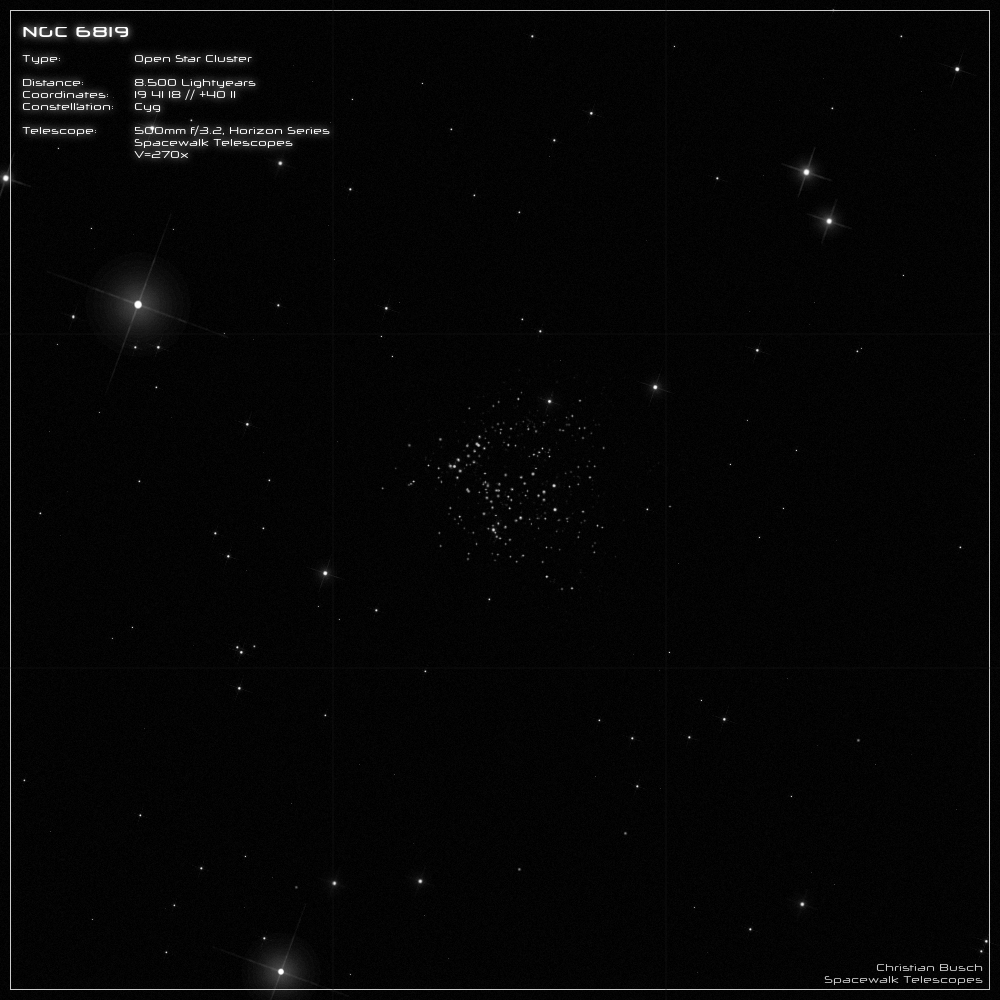NGC 6819 - Open Star Cluster
The open star cluster NGC 6819 is located in the constellation Cygnus and has a diameter of 5' and a total apparent magnitude of 7.3mag.
It was discovered in March 1784 by Caroline Herschel, the sister of F.W. Herschel.
The distance to the cluster is around 8,500 light-years, which represents the average of the distances published to date. From the apparent
size, the diameter of NGC 6819 can be calculated to be 12.4 light-years, with the inner part visible in a telescope measuring only around 8
light-years. The cluster contains 25 stars with magnitudes of 11...12mag as well as over 100 other fainter stars. The exact number is unknown.
The brightest stars are 10.8mag bright, which corresponds to an absolute magnitude of M= -1.2mag or 250 times the luminosity of our Sun.
The metallicity of the stars is about as high as that of our Sun (90-120%), which means that the cluster must be quite old. Sources put
its age at 2.5 billion years, albeit with an uncertainty of 500 million years. The fact that the cluster has not yet disintegrated is due to its rather
high stellar density, which ensures that the individual stars are strongly gravitationally bound to the cluster.
----------------------------------------------------------------------------------------------------------------------------------------------
In my 20” f/3, the cluster NGC 6819 offers a great sight. At a magnification of 210x, the two very bright stars in the immediate vicinity
still fit well into the field of view and offer a great contrast to the dull open cluster, that is most beautiful at 380x.
At this magnification, 60-70 individual stars can be seen, with even fainter stars flashing out of the dark background from time to time.
NGC 6819 has an irregular shape and its stars are also very unevenly distributed - on the one hand there are almost starless patches
but then there are also real star clumps in which the stars are closely packed together. Overall, the cluster is highly concentrated and
stands out very well from the star-rich surroundings.
A really exciting object for larger telescopes! :)

